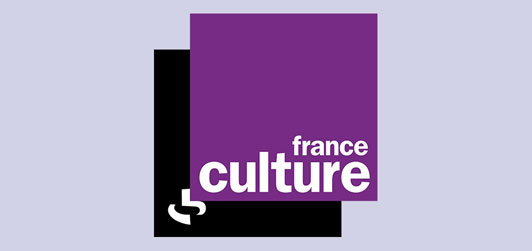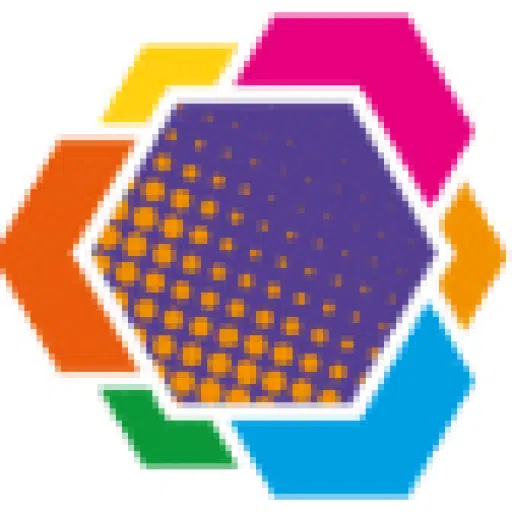[FRANCE CULTURE] OliKrom : from paints to smart colors

A former research director at the Bordeaux Institute of Condensed Matter Chemistry, Jean-François Létard has taken intelligent pigments out of the laboratory and turned them into an industrial innovation. As part of the Deep tech movement, he now heads a small business with 19 employees.
Although phosphorescence of materials is not unknown to us – we know it from alarm clock hands or the little stars stuck to children’s bedroom ceilings – this process had never before been developed in such an effective way on a road that it could withstand abrasion, wear and tear, rain or even frost.
Inaugurated in 2018 in Pessac, France, the first bicycle path to be marked with photoluminescent paint developed by OliKrom has since been emulated by many others. Nearly 80 towns and cities, including Annecy and more recently Brest, have chosen to make their soft mobility lanes safer with this paint, which lights up at night. Loaded with pigments that store light during the day and give it back when it’s dark, it provides users with a luminous guide visible for ten hours from a distance of 80 meters.
Nominated for the Road Safety Innovation Award in 2020, these innovative road markings are of particular interest to local councillors in charge of roads, as in many cases they can also replace street lighting. This is a strong argument for Olikrom’s CEO, Jean-François Létard, who explains to us, with an impact study to back it up, that the price of his luminescent paint is ten times higher than that of a conventional paint, offering a much less costly alternative than an electric or even solar-powered installation for local authority budgets.
“We remain the most environmentally-friendly solution currently available. Life-cycle analysis of our paint compared to all other lighting solutions shows that in terms of overall impact, 1 km of street lighting using light masts is equivalent to 184 kilometers of photoluminescent pathway.“
As far as the ecological transition is concerned, it’s true that road infrastructure poses a real challenge. They consume resources and energy to build, maintain and operate.
Simple and long-lasting, phosphorescent paint is a good alternative for signposting high-risk areas such as crosswalks, speed bumps, dangerous bends or freeway ramps.Winner of the “Road of the Future” call for projects launched by the French Environment and Energy Management Agency (Ademe) as part of the “Investments for the Future” program, the start-up has developed its marking products in partnership with Eiffage. Now in the final certification phase, motorists could well see them appearing on France’s roads and freeways as early as this year.
Heat-, gas- and impact-reactive paints
Building on its initial success, the Gironde-based start-up has grown into a flourishing industrial enterprise. In addition to its laboratories, it has equipped itself with a production unit to control the entire manufacturing chain, from pigment to finished product.
With annual growth of 15% since its creation in 2014 and 30% last year, OliKrom holds a portfolio of patents and several dozen smart pigments that it develops at the request of customers. The potential for smart colors is enormous: thermochrome, photochrome, chemochrome, piezochrome echoes Jean-François Létard.
Without revealing the composition of his paints, inks and coatings, which remains his industrial secret, the former organic chemistry researcher at the CNRS assures us that he doesn’t work with minerals taken from nature, but with crystals that have been synthesized. Once combined, they have the property of being able to change color under the effect of gas, pressure, heat or humidity.
Imagine a pipe that turns blue when there’s a gas leak, red when it’s hot, or green when it starts to rust. At a glance, you can spot a problem or an anomaly.
Like the chameleon, OliKrom has worked with Safran to develop a heat-sensitive material for its engines. For Airbus, the company has developed a piezochromic (pressure-sensitive) paint that can be used to localize impacts on an aircraft’s skin. The applications are numerous, and requests from manufacturers are pouring in, whether in the automotive, cosmetics, healthcare or construction sectors.
Soon, a facade or roof will be able to change color according to the weather: light color to reflect heat in summer, dark color to absorb it when it’s cold. On the ground, it could mitigate the effects of heat sinks in cities. The company boss won’t reveal all the avenues his team of researchers and engineers are working on, which take an average of two to three years to develop, but he assures us that he will refuse even the most far-fetched or incidental requests. As a matter of ethics, he prefers to concentrate only on those that have a useful function and offer an ecological, economic or safety benefit.
At a rate of 70 customers a year, the company is expanding its product range and has begun to sell internationally in Europe, Canada and Africa. According to Jean-François Létard, we can expect to see intelligent colors leaving the laboratory and soon entering our daily lives.

